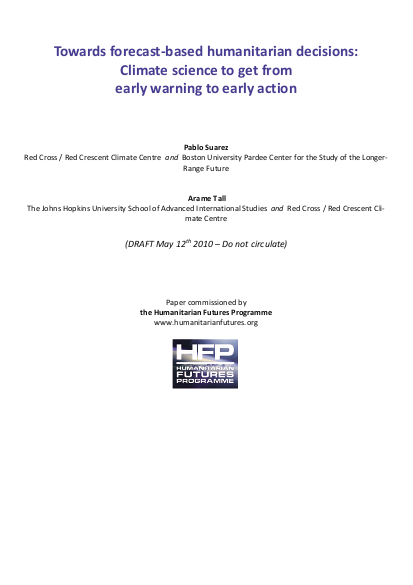
Why do people continue to suffer and die due to entirely predictable natural hazards? The remarkable progress in science and technology over recent decades allows us to anticipate future conditions, communicate early warnings and take early action to avoid losses, yet many recent disasters are evidence of a dreadful gap between science and the humanitarian sector. Can forecasters and risk managers build common ground, designing smart forecast-based decisions as well as simple decision-based forecasts? The humanitarian sector needs to restructure its relationship to predictable climate-related threats. One option is to evolve towards knowledge-based entities that can rapidly absorb and act upon information about risks: routinely taking humanitarian action before a disaster or health emergency happens, and making full use of scientific information on all timescales. Two successful instances of collaboration between forecasters and the Red Cross illustrate this concept of “Early warning à Early Action”: The 2008 emergency appeal launched by the IFRC West and Central Africa Zone to improve flood management based on a seasonal rainfall forecast (the first of its kind), and a workshop that convened scientists, humanitarian workers and vulnerable people in Senegal, which enabled a constructive dialogue through innovations such as participatory games and videomediated approaches to risk management. This paper proposes a framework based on four key four attributes of science-based forecasts: location (where is the event likely to happen?), magnitude (how big?), lead time (how far into the future?), and probability (what are the chances of it happening?), linking them respectively to vulnerability, expected loss, range of plausible actions, and the decision of whether or not to act. It is not easy to compare failure to prevent losses (e.g. fatalities due to inaction) and false alarm (e.g. expenses related to actions that prove unnecessary). While it will inevitably involve subjective criteria, the choice to act or not to act should be informed by a rigorous assessment of possible outcomes. Stakeholders need to jointly identify the constellation of means, relationships, and processes that can enable forecast-based decisions to save lives.